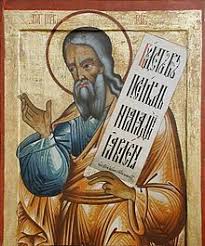 Our venerable father among the saints, Pachomius, the great, is liturgically commemorated. He is a central figure in the monastic life, East and West.
Our venerable father among the saints, Pachomius, the great, is liturgically commemorated. He is a central figure in the monastic life, East and West.
Pachomius was born in 292. As a young man, he served in the army under the emperor Constantine. The hardship of military life in Egypt was lightened by the kindness the soldiers encountered in every Christian settlement along their march. Pachomius was so impressed that he was baptized and embraced the monastic life.
He withdrew to the Egyptian wilds to live with Palemon, one of the desert fathers. After his guide and teacher died, Pachomius’ brother John came to live with him. Before long there were others, and Pachomius was soon the abba of a whole colony of monastics, totaling about seven thousand. His gift of leadership and skill in organization has been raised by later tradition to the level of direct divine inspiration, which is expressed in the story of an angel, dressed in the monastic habit, appearing to Pachomius and instructing him to adopt this garb for his monks. Aside from such embellishments, Pachomius remained a model of practical genius.
He established the Lavra of Tabenna on the Nile, with a school for boys and a hospice for travelers. He wrote a typicon in Coptic, probably the first such rule in monastic history, and insisted that all the monks learn to read the scriptures. He organized teams of cooks, bakers, and gardeners. Each dwelling for these professional families included a library and a scriptorium for the copying of sacred texts.
His sister begged him to start a monastery for women. Her persistence and the number of nuns already at the gates moved him to consent. It was built on the opposite bank of the Nile. Twenty years after the council of Nicaea, a plague swept through the Nile valley. Pachomius died nursing his stricken monks.
(NS typicon)
The Orthodox and Catholic Churches remember him today, May 15th while the Coptic Church celebrates his feast on May 9th.




